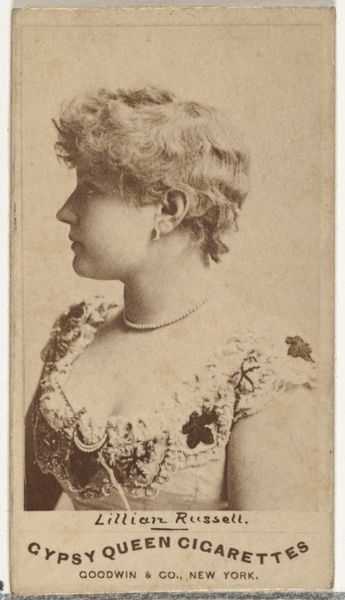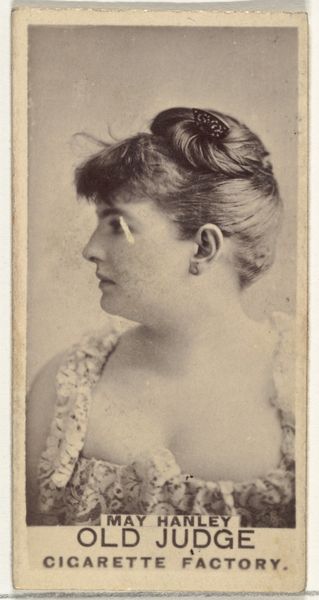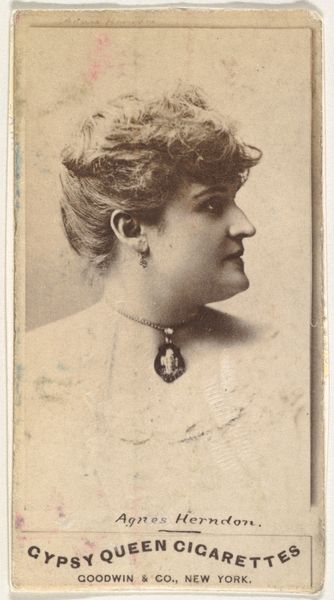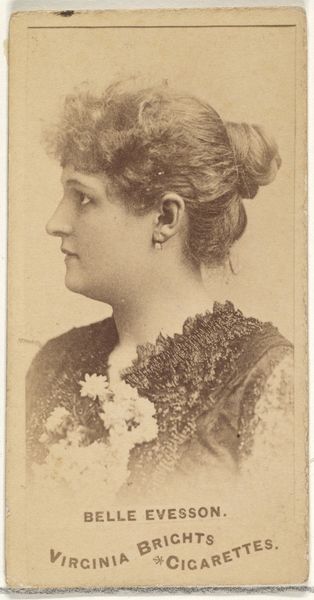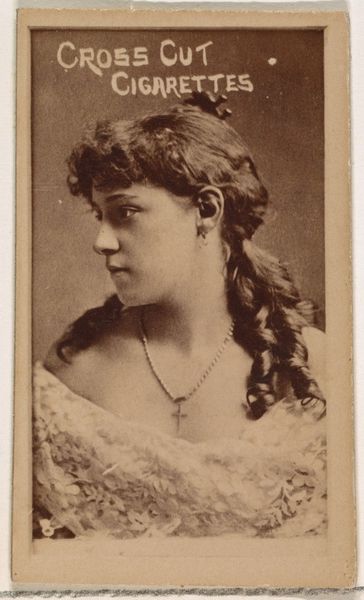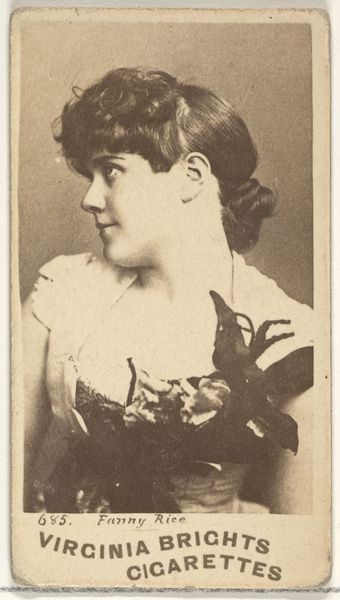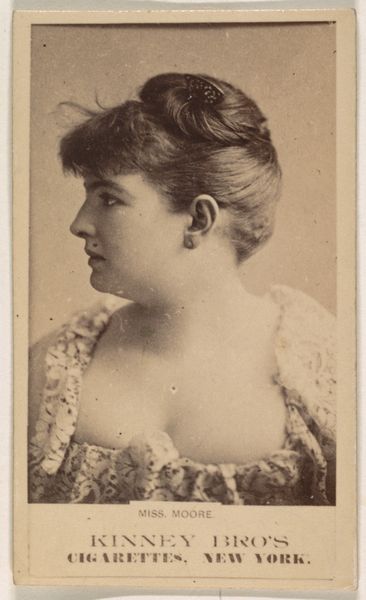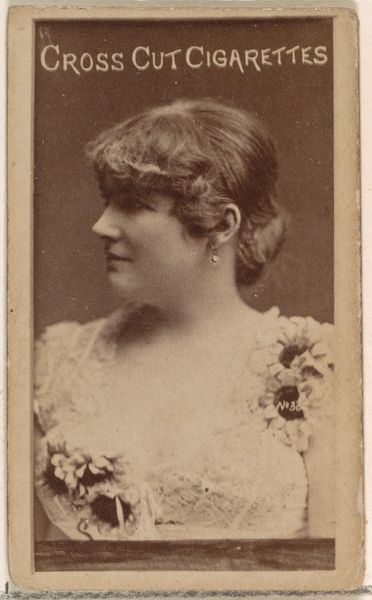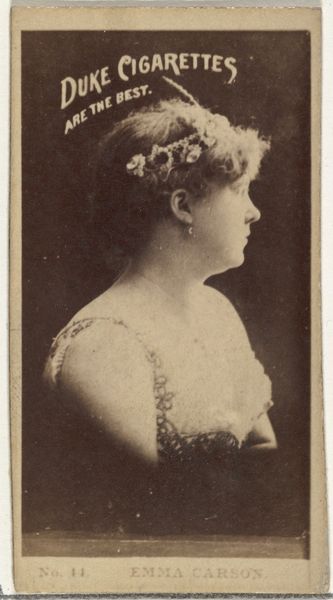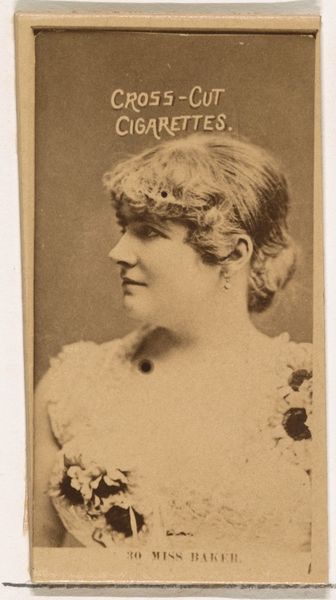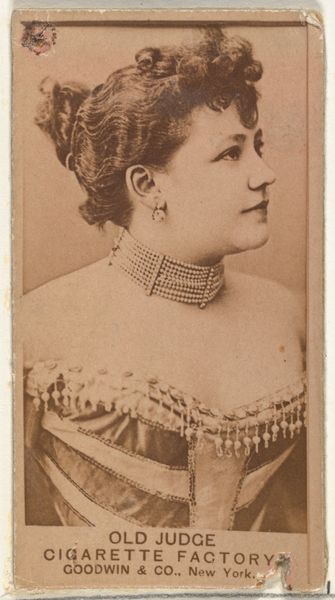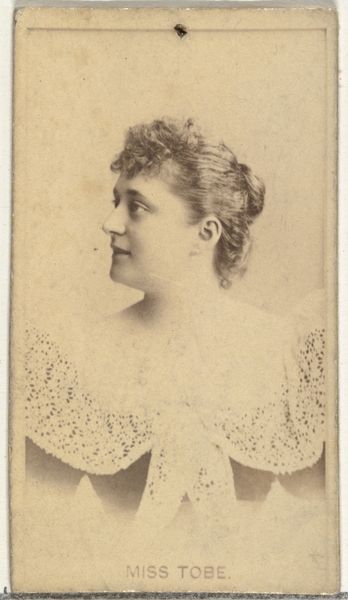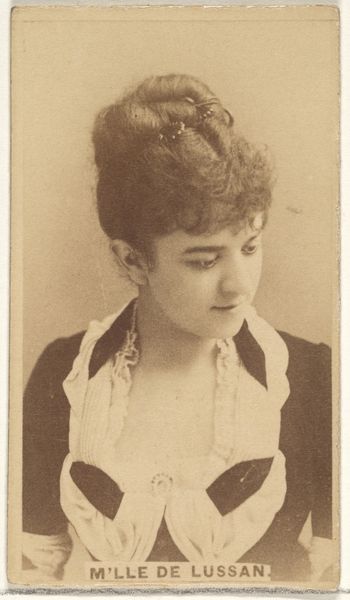
Card Number 304, Emilia de Silva, from the Actors and Actresses series (N145-3) issued by Duke Sons & Co. to promote Cross Cut Cigarettes 1880s
0:00
0:00
Dimensions: Sheet: 2 11/16 × 1 3/8 in. (6.8 × 3.5 cm)
Copyright: Public Domain
Curator: Let's talk about "Card Number 304, Emilia de Silva" from the Actors and Actresses series, published by Duke Sons & Co. in the 1880s. It's part of the Met's collection. Editor: It has a dreamlike, theatrical feel to it. There is a stillness and formality—I see the delicate paper stock and the inscription tying it to tobacco advertising, which contrasts dramatically with the opulent styling. Curator: Absolutely. These cards were essentially marketing tools, using portraits of celebrities to promote Cross Cut Cigarettes. But let’s delve deeper. Emilia de Silva, though not a household name today, was likely a well-known performer then. These objects tell us a lot about labor, class, and representation. Consider the women and other workers who processed the actual tobacco, right up to the consumer, who saw these images while buying commodities. How do gendered and racialed forms of labor intersect in this print? Editor: It is the way the image gets distributed that is so important. Think about the technology to mass produce a small card like this. What was the process involved to produce a glossy finish? What about ink quality and how it changed through different stages? In this portrait the subject looks well off; she is also endorsing these products with her image. I imagine the relationship was more complex with other actors from the time. Curator: Exactly. The actress becomes part of the machinery, quite literally consumed as the public consumes the cigarettes bearing her image. Consider too the performance of identity for someone like Emilia – a possible reflection of both her character on stage and her perceived persona, designed for the largely white, male gaze. Also, we could compare her status to some other minority female artists from today who were not afforded this luxury. Editor: Yes, by seeing art like this from both our perspectives, we have teased out many layers to it! I appreciate knowing how labor and consumerism meet in the frame. Curator: And for me, the intersectional lens helps us confront inequalities still shaping artistic spaces today, offering tools for a more equitable future.
Comments
No comments
Be the first to comment and join the conversation on the ultimate creative platform.
